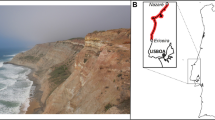Abstract
Ensuring long-term accessibility of Earth Science archive data is a recurrent issue for data centers. Heterogeneity of data adds particular challenges. The Data Virtualisation Toolkit (DVT) has been developed by the SCIDIP-ES project to support long-term access and use of heterogeneous Earth Science (ES) data in a format-independent manner. DVT provides four key functions: (a) edit format description, (b) interpret bit stream into data values using the format description, (c) construct legacy information from data values via coherent information models, and (d) visualize the retrieved legacy information if the information model is supported by the visualization component. The toolkit incorporates a tree structure editor, a bit stream interpretation engine, information models in XQuery, and a visualization component. DVT is designed to provide long term access to Earth Science data with the proper representation information which contains the technical knowledge required for interpretation. A trial application using both vector and raster data shows that DVT could provide interoperable solutions to support the long-term preservation of ES data. This paper reports on the concept, development, and implementation of DVT.




Similar content being viewed by others
Notes
The SCIDIP-ES project - http://www.scidip-es.eu
The SHAMAN project - http://shaman-ip.eu/shaman/
The APARSEN Project - http://www.alliancepermanentaccess.org/index.php/aparsen/
http://docs.oracle.com/javase/7/docs/api/javax/swing/JTextArea.html, accessed 15 April 2014
http://saxon.sourceforge.net/, accessed 15 April 2014
http://int-platform.scidip-es.eu/joomla/, accessed 15 April 2014
www.unidata.ucar.edu/software/netcdf/examples/files.html, last seen on May 05th, 2014
References
CCSDS (2012a) Reference Model for an Open Archival Information System (OAIS), CCSDS 650.0-M-2, http://public.ccsds.org/publications/archive/650x0m2.pdf, Accessed 26 August 2013
GAEL (2008) Data Request Broker DRB API, http://www.gael.fr/drb/doc/GAEL-P243-DOC-001-01-01_DRB_API_handbook.pdf, Accessed 26 August 2013
DEBAT (2003) DEBAT: Development of EAST Based Access Tools Interface Control Document, SS/DEBAT/ICD, http://debat.c-s.fr/east/Interface Control Document [SS-DEBAT-ICD 2.0].pdf, Accessed 26 August 2013
Powell AW, Beckerle MJ, Hanson SM (2011) Data Format Description Language (DFDL) v1.0 Specification, http://www.ogf.org/documents/GFD.174.pdf, Accessed 26 August 2013
Giaretta D, Rankin S (2011) Understanding a digital ObjectDigital object: basic representation information, in: advanced digital preservation. Springer, Berlin Heidelberg, pp 69–138
Mbaye S (2004) Use of XML Schema and XML Query for ENVISAT product data handling, http://citeseerx.ist.psu.edu/viewdoc/download?rep=rep1&type=pdf&doi=10.1.1.136.4052, Accessed 26 August 2013
CCSDS (2012b) XML Formatted Data Unit (XFDU) Structure and Construction Rules, CCSDS 661.0-B-1, http://public.ccsds.org/publications/archive/661x0b1.pdf, Accessed 26 August 2013
ISO 19123 (2005) Geographic information – Schema for coverage geometry and functions, ISO 19123, http://www.iso.org/iso/home/store/catalogue_tc/catalogue_detail.htm?csnumber=40121, Accessed 26 August 2013
Baumann P (ed.) (2012) OGC ® GML Application Schema – Coverages, OGC 09-146r2, Version 1.0.1, https://portal.opengeospatial.org/files/?artifact_id=48553, Accessed 26 August 2013
Taylor M (2013) TOPCAT - Tool for OPerations on Catalogues And Tables Version 4.0-1. www.star.bris.ac.uk/~mbt/topcat/sun253.pdf, Accessed 26 August 2013
Longley PA, Goodchild MF, Maguire DJ, Rhind DW (2010) Geographic Information Systems and Science, 3rd ed., Wiley-Blackwell
Giaretta D (2011) Cultural heritage testbed, in: advanced digital preservation. Springer, Berlin Heidelberg, pp 387–406
Portele C (ed.) (2007) OpenGIS® Geography Markup Language (GML) Encoding Standard, OGC 07–036, Version 3.2.1, http://portal.opengeospatial.org/files/?artifact_id=20509, Accessed 26 August 2013
Shaon A, Giaretta D, Conway E, Matthews B, Yu J, Marelli F, Guarino R, Giammatteo U, Marketakis Y, Marketakis T, Brocks H and Engel F (2012) Towards a Long-term Preservation Infrastructure for Earth Science Data, In: Proceedings of the 9th International Conference on Preservation of Digital Objects (iPRES2012), October 1–5, 2012, Toronto, Canada
Baumann P (ed.) (2013) OGC® Web Coverage Service 2.0 Interface Standard - KVP Protocol Binding Extension - Corrigendu, OGC 09-147r1, Version 1.0.1, https://portal.opengeospatial.org/files/09-147r1, Accessed 15 April 2014
OGC policy SWG (2009) The Specification Model — A Standard for Modular specifications, OGC 08-131r3, Version 1.0, October 2009, https://portal.opengeospatial.org/files/?artifact_id=34762, Accessed 15 April 2014
Yu J, Baumann P, Misev D, Campalani P, Albani M, Marelli F, Giaretta D, Crompton S (2014) Point of view: long-term access to earth archives across multiple disciplines. Comput Stand Interfaces 36(6):909–917
Cossu R (2012) GENESI-DEC and SCIDIP-ES, http://portal.genesi-dec.eu/presentations/GENESI-DEC-SCIDIP-ES.pdf, Accessed 15 April 2014
Nativi S, Caron J, Domenico B, Bigagli L (2008) Unidata’s common data model mapping to the ISO 19123 data model. Earth Sci Inform 1(2):59–78
Domenico B, Nativi S (Eds.) (2011) WCS 2.0 Interface Standard – NetCDF Encoding Format Extension, OGC 11–010, Version 2, http://www.unidata.ucar.edu/ mailing_lists/archives/galeon/2011/pdf_zj1zXL2oW.pdf, Accessed 15 April 2014
Davis ER, Caron J, Domenico B (2008) Grids and beyond: netCDF-CF and ISO/OGC Features and Coverages, AMS 2008, http://www.unidata.ucar.edu/staff/edavis/PapersPresentations/2008-01-AMS-GridPlus/2008-01-AMS-Paper.pdf, Accessed 15 April 2014
OMB Circular A-11, Part 6 (2014) Preparation and Submission of Strategic Plans, Annual Performance Plans, and Annual Program Performance Reports, http://www.whitehouse.gov/sites/default/files/omb/assets/a11_current_year/s200.pdf, Accessed 15 Auguest 2014
Unidata (2014) The NetCDF Classic Format Specification, http://www.unidata.ucar.edu/software/netcdf/docs/html_guide/file_format_specifications.html, Accessed 15 September 2014
Acknowledgments
The work carried out in this study was supported by the SCIDIP-ES and EarthServer projects which are funded by the Seventh Framework Programme (FP7) of the European Commission (EC) under Grant Agreements 283401 s and 283610 respectively, by NSFC (Project 41401454) and Natural Science Foundation of Fujian Province of China (No.2014 J05048).
Author information
Authors and Affiliations
Corresponding author
Additional information
Communicated by: H. A. Babaie
Rights and permissions
About this article
Cite this article
Yu, J., Baumann, P., Crompton, S. et al. Facilitate earth science data interoperability using the SCIDIP-ES data virtualisation toolkit. Earth Sci Inform 8, 711–719 (2015). https://doi.org/10.1007/s12145-014-0189-8
Received:
Accepted:
Published:
Issue Date:
DOI: https://doi.org/10.1007/s12145-014-0189-8




